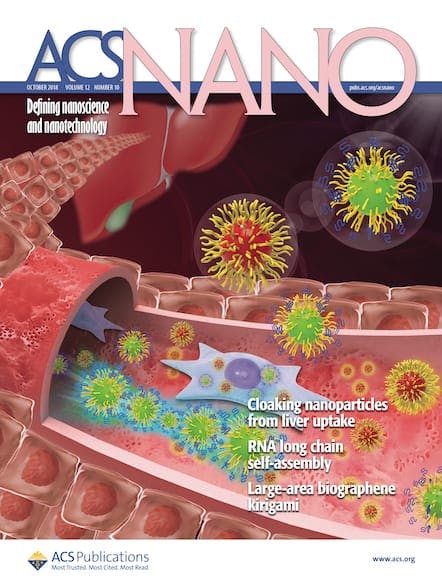Ultralight and exceptionally strong, graphene aerogels are attractive materials for use as catalysts, electrodes, and flexible electronics. But so far it has been hard to make them both strong and elastic. Researchers have now overcome that hurdle by making a squishable graphene aerogel that mimics an aquatic plant’s highly ordered porous structure. The new, conductive […]

Ultralight and exceptionally strong, graphene aerogels are attractive materials for use as catalysts, electrodes, and flexible electronics. But so far it has been hard to make them both strong and elastic. Researchers have now overcome that hurdle by making a squishable graphene aerogel that mimics an aquatic plant’s highly ordered porous structure.
The new, conductive aerogel springs back to its original shape after being squeezed to half its size with more than 6,000 times its weight. The aerogel retains 85% of its original strength even after being squeezed more than 1,000 times. In comparison, aerogels with random pore structures that the researchers made and tested lost more than half of their strength after just 10 compression cycles. The combination of low density, strength, super elasticity, and conductivity are critical for applications in which the material undergoes large volume changes, such as an absorbent that soaks up chemicals or an electrode that takes up and releases ions.
The graphene aerogel bounces back after being squished by more than 6,000 times its weight. Credit: ACS Nano
Scientists have typically made graphene aerogels by chemically reducing graphene oxide flakes suspended in water and freeze-drying them. More recently, scientists used 3-D printing with graphene inks to make porous, compressible graphene aerogels.
But these methods typically result in aerogels with random pore structures, compromising their properties, says chemical engineer Hao Bai of Zhejiang University. They can be strong but not elastic, for example, or have good electrical conductivity at the expense of mechanical properties. To combine strength, elasticity, and conductivity requires carefully designed, ordered structures.
Bai and his colleagues took inspiration from Thalia dealbata, an aquatic plant with porous, slender stems that are strong and flexible, allowing the plant to withstand wild winds. The stems are built out of layers of 100- to 200-µm-diameter structural tubes, connected to each other by thinner 1-mm-long bridges that act like springs. The team thought the plant’s properties could be replicated in an aerogel with a similar structure.
The researchers made a cube of graphene aerogel, 10 mm on a side, using a specialized freezing technique for creating structured porous materials that Bai helped develop in 2015 while at Lawrence Berkeley National Laboratory. The method uses ice as a template to freeze a suspension of graphene oxide in a controlled way that results in parallel graphene oxide sheets in two directions—forming plates connected by bridges as in T. dealbata. Freeze-drying and warming the sample transformed the material into graphene, producing the aerogel.
To assess the material’s potential for use in sensors and electronics, the team tested its conductivity and how it varies with compression. When they connected the aerogel to a light-emitting diode in a circuit, they found that squeezing the aerogel increased conductivity as they expected, demonstrated by the LED glowing brighter. “The conductivity of the aerogel is high considering its low density,” Bai says. “With higher density, the aerogel should be more conductive.”
This is a clever, low-cost, and scalable freezing process to generate a new aerogel microstructure, says Peter Pauzauskie of the University of Washington. “This kind of detailed graphene microstructure would be very expensive and difficult to achieve” using other methods, including 3-D printing, he says.
Bai and his colleagues plan to try making aerogels out of other materials like cellulose and polymer-silica composites using their technique. With well-designed biomimetic structures, those materials could find many uses, such as in filtration, sensing, and liquid adsorption, Bai says.
CORRECTION: This story was updated on July 19, 2017, to correct the scale bar on the photographs of aerogel cubes being compressed by a weight.
